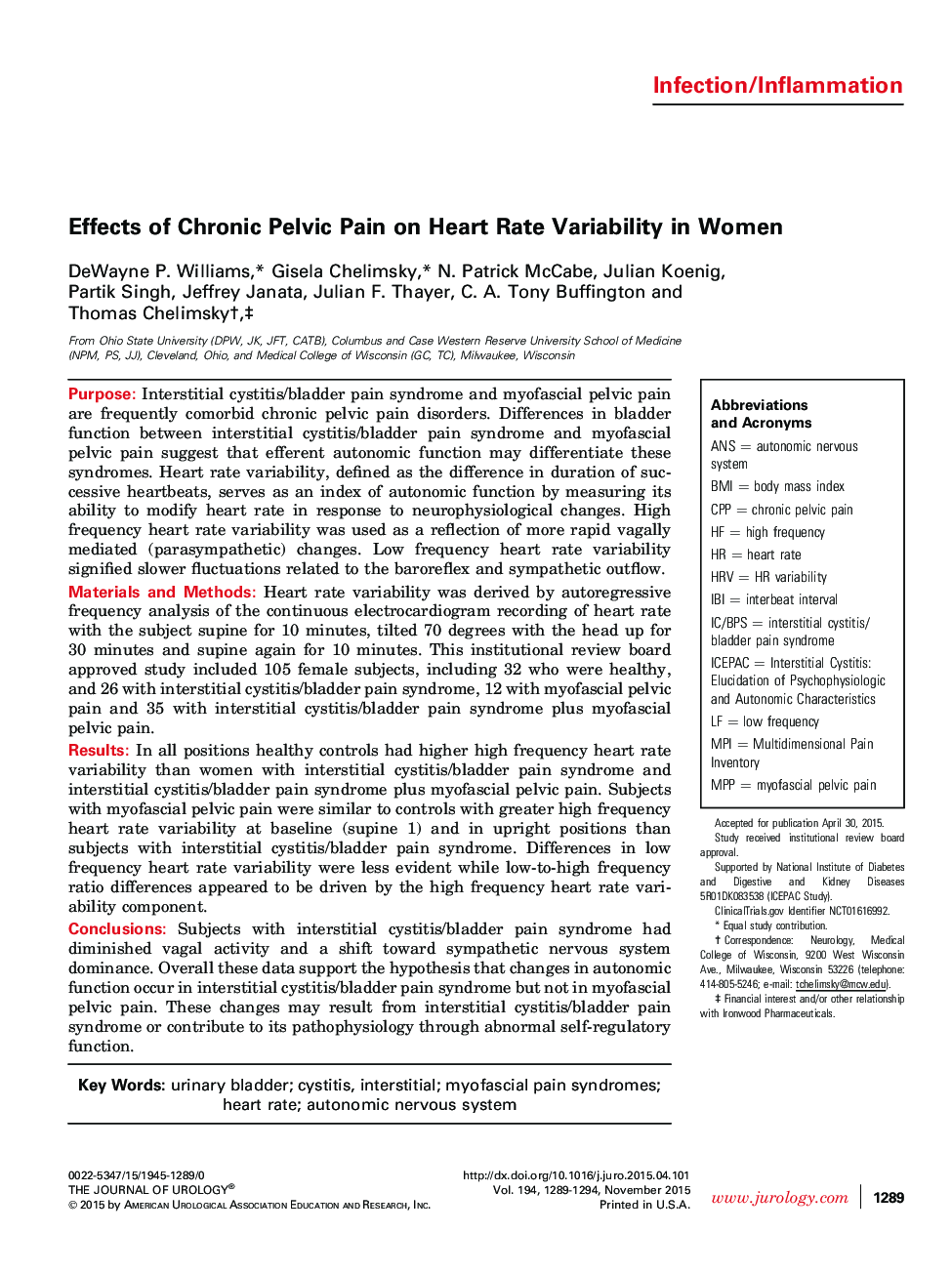| کد مقاله | کد نشریه | سال انتشار | مقاله انگلیسی | نسخه تمام متن |
|---|---|---|---|---|
| 3860979 | 1598884 | 2015 | 6 صفحه PDF | دانلود رایگان |
PurposeInterstitial cystitis/bladder pain syndrome and myofascial pelvic pain are frequently comorbid chronic pelvic pain disorders. Differences in bladder function between interstitial cystitis/bladder pain syndrome and myofascial pelvic pain suggest that efferent autonomic function may differentiate these syndromes. Heart rate variability, defined as the difference in duration of successive heartbeats, serves as an index of autonomic function by measuring its ability to modify heart rate in response to neurophysiological changes. High frequency heart rate variability was used as a reflection of more rapid vagally mediated (parasympathetic) changes. Low frequency heart rate variability signified slower fluctuations related to the baroreflex and sympathetic outflow.Materials and MethodsHeart rate variability was derived by autoregressive frequency analysis of the continuous electrocardiogram recording of heart rate with the subject supine for 10 minutes, tilted 70 degrees with the head up for 30 minutes and supine again for 10 minutes. This institutional review board approved study included 105 female subjects, including 32 who were healthy, and 26 with interstitial cystitis/bladder pain syndrome, 12 with myofascial pelvic pain and 35 with interstitial cystitis/bladder pain syndrome plus myofascial pelvic pain.ResultsIn all positions healthy controls had higher high frequency heart rate variability than women with interstitial cystitis/bladder pain syndrome and interstitial cystitis/bladder pain syndrome plus myofascial pelvic pain. Subjects with myofascial pelvic pain were similar to controls with greater high frequency heart rate variability at baseline (supine 1) and in upright positions than subjects with interstitial cystitis/bladder pain syndrome. Differences in low frequency heart rate variability were less evident while low-to-high frequency ratio differences appeared to be driven by the high frequency heart rate variability component.ConclusionsSubjects with interstitial cystitis/bladder pain syndrome had diminished vagal activity and a shift toward sympathetic nervous system dominance. Overall these data support the hypothesis that changes in autonomic function occur in interstitial cystitis/bladder pain syndrome but not in myofascial pelvic pain. These changes may result from interstitial cystitis/bladder pain syndrome or contribute to its pathophysiology through abnormal self-regulatory function.
Journal: The Journal of Urology - Volume 194, Issue 5, November 2015, Pages 1289–1294
